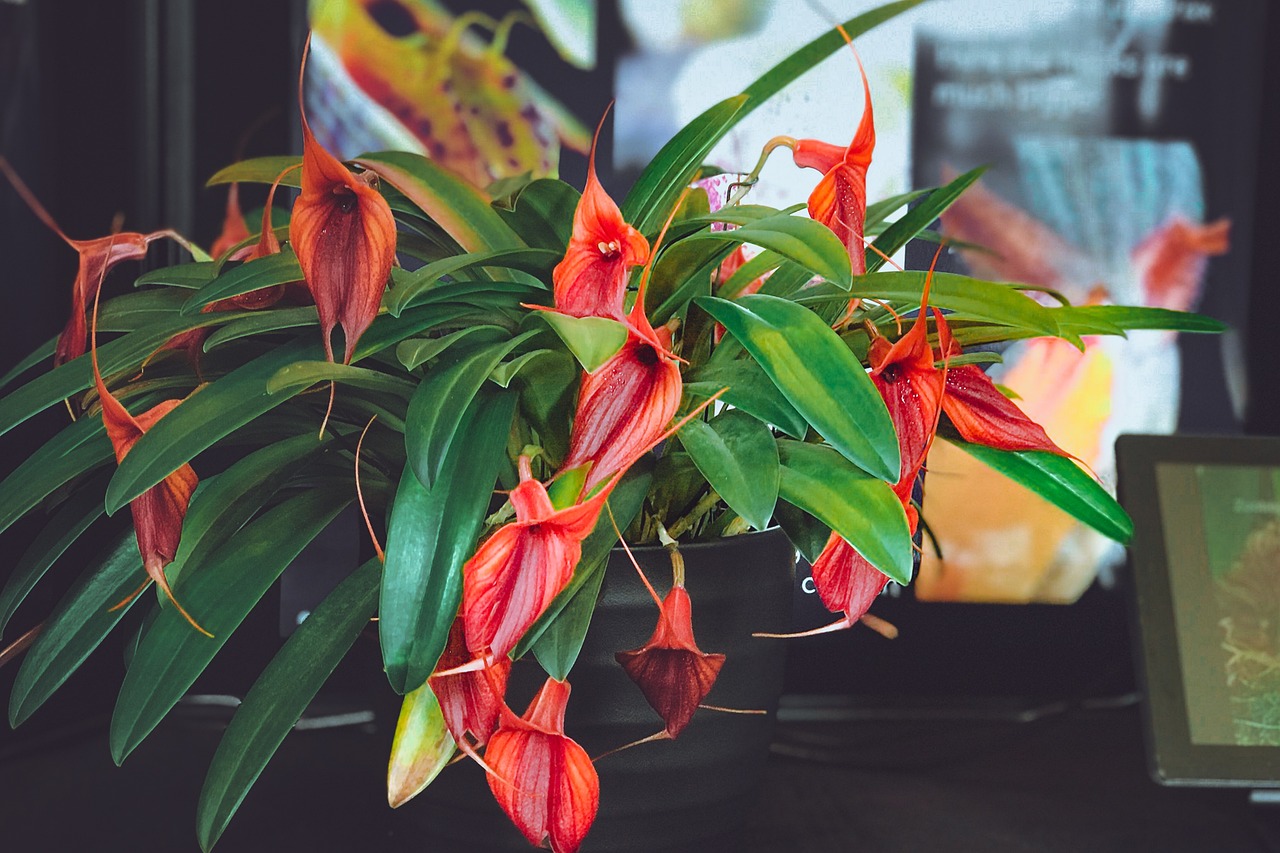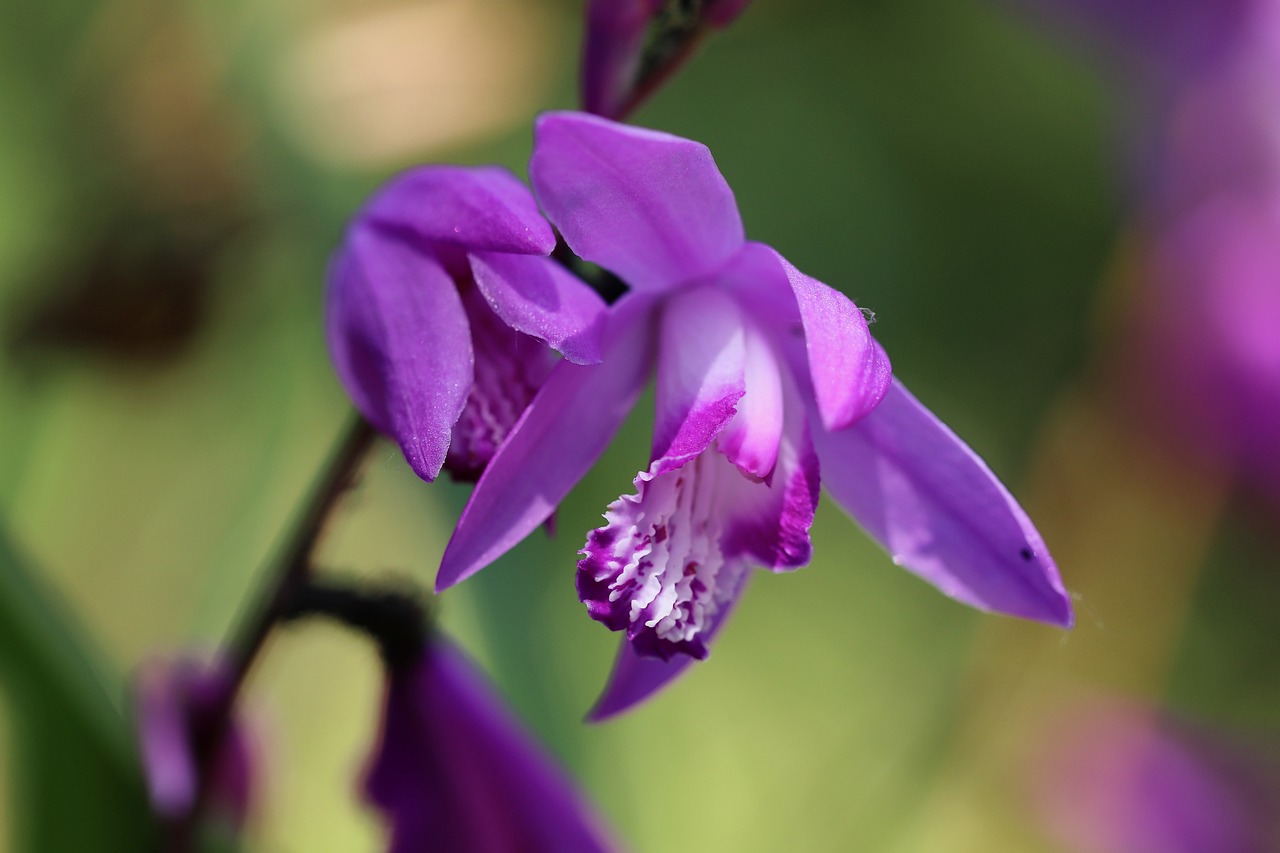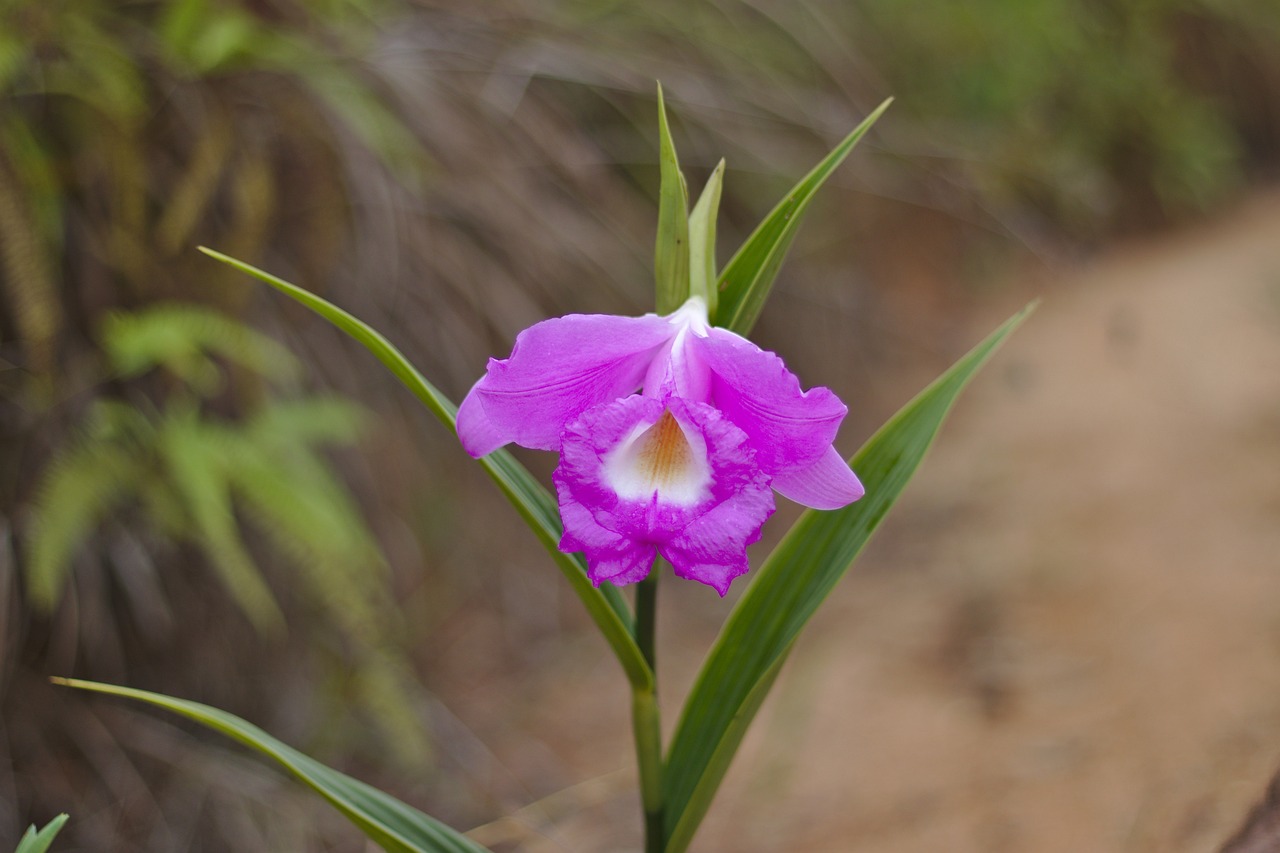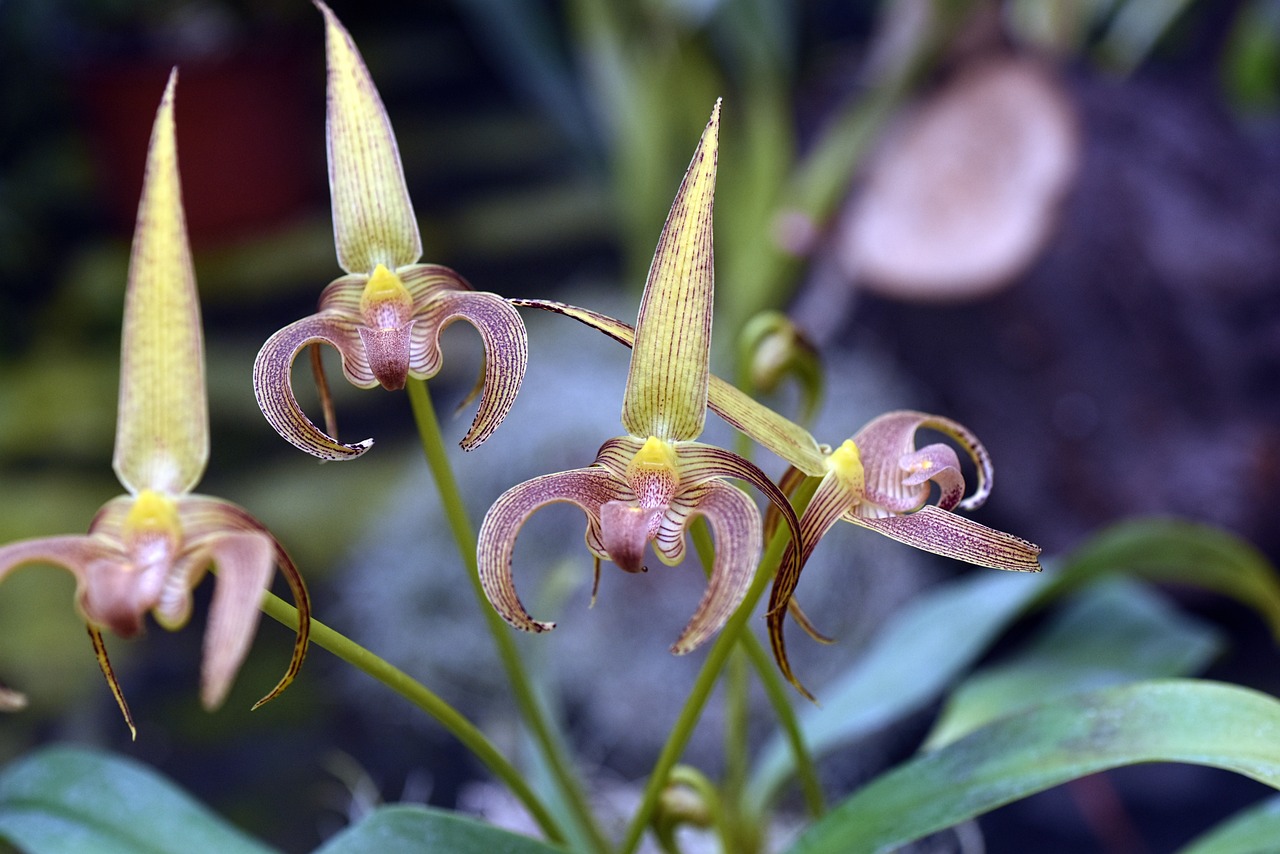Cypripedium: Features and Care
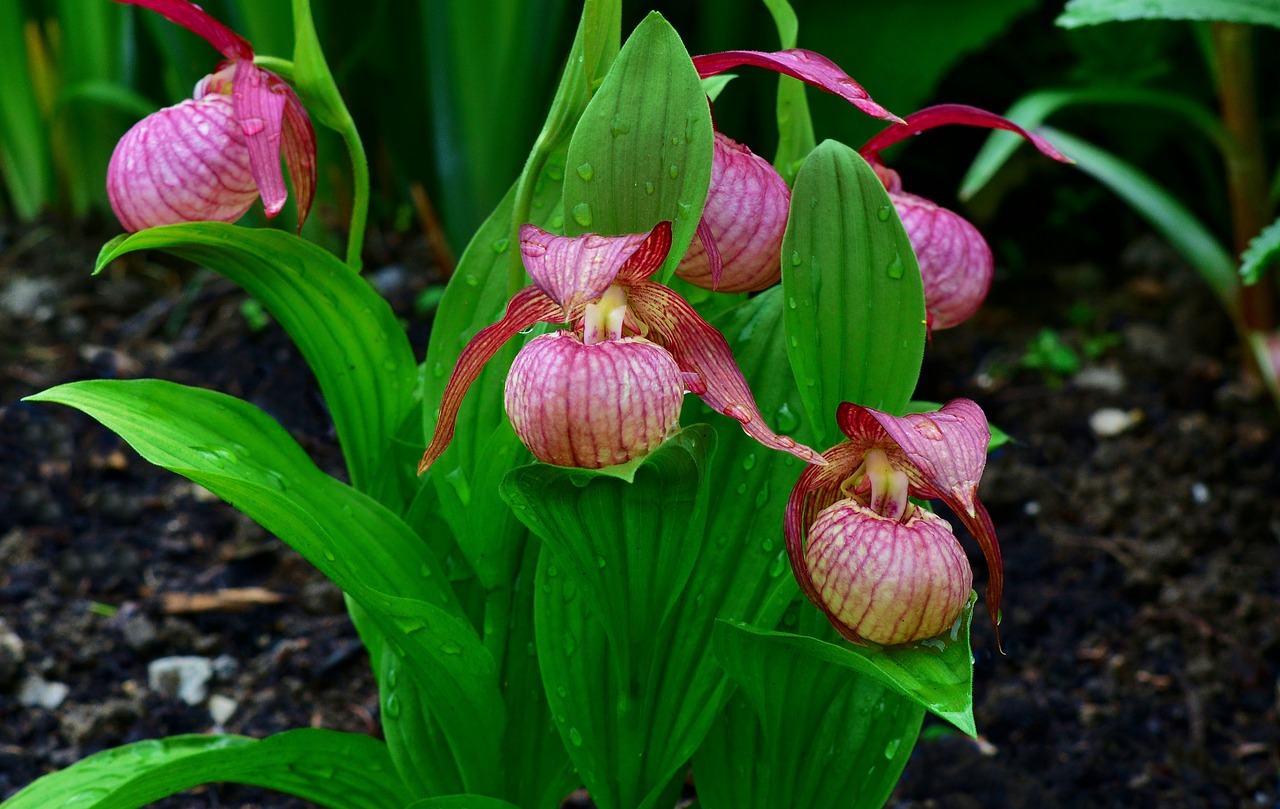
Cypripedium, a member of the orchid family, is renowned for its unique flower shape and rarity, often referred to as the “jewel of nature.” Some species are native to Japan, making them highly valued for ornamental purposes and research.
This article explores the essential information, cultural and historical significance, and care tips for growing Cypripedium.
Basic Information
- Scientific Name: Cypripedium macranthos and related species
- Family: Orchidaceae
- Origin: Temperate regions of the Northern Hemisphere (Japan, China, Russia, Europe, North America)
- Appearance: Cypripedium is a perennial herbaceous plant that grows to a height of 20–50 cm. It blooms from spring to early summer with uniquely shaped flowers featuring a pouch-like labellum (part of the flower). The pouch resembles the bag worn in traditional Japanese “Atsumori” performances, which inspired the plant’s Japanese name. Flower colors vary by species and include pink, purple, and white.
- Blooming Season: May to June, depending on the region and species.
Cultural Significance Worldwide
Cypripedium holds special meanings across different cultures. In Europe, it is known as the “Lady’s Slipper” and has long been a symbol of elegance in aristocratic culture. Historically, it was cultivated in the greenhouses of French and British estates and admired for its delicate beauty.
In Japan, Cypripedium is associated with traditional culture due to its name’s origin, which refers to the samurai Atsumori from “The Tale of the Heike.” Often depicted as a symbol of “tranquility in nature,” it appears in haiku and waka poetry. The flower also serves as a symbol for environmental conservation, drawing attention to the need to protect natural habitats.
Historical Episodes
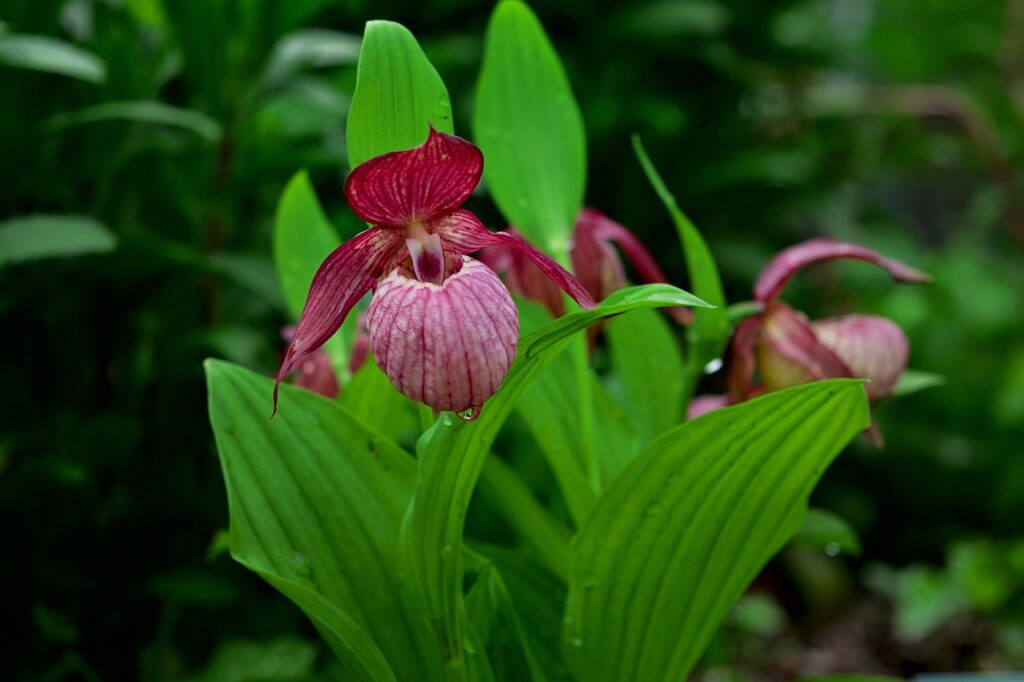
The name “Atsumori” in Japanese refers to the Heian-period samurai Taira no Atsumori. The flower’s pouch-like structure is said to resemble the bag from his ceremonial costume. Cypripedium has been cherished as a wildflower in Japan for centuries and was considered a “rare treasure” among enthusiasts during the Edo period.
In Europe, a species of Cypripedium was introduced in the 16th century and became a luxury plant cultivated in royal greenhouses. During the 19th-century gardening boom, Cypripedium gained prominence, and efforts to hybridize it led to the development of diverse varieties.
Gardening Advice
Growing Cypripedium requires recreating its natural habitat, making proper care essential. Below are key points for cultivation:
Light
Prefers partial shade. Avoid strong direct sunlight and opt for shaded gardens or spots under trees.
Watering
Keep the soil moist but not overly wet. Water when the surface soil becomes dry, and avoid watering directly on the leaves.
Soil
Requires well-drained, acidic soil rich in organic matter. Orchid or woodland soil mixes are ideal.
Fertilizer
Apply diluted liquid fertilizer every two weeks during the growing season in spring. Avoid fertilizing during the dormant period.
Winter Care
While some species are cold-hardy, protect the plant in colder climates by mulching around the base.
Conclusion
Cypripedium captivates with its one-of-a-kind flower shape and rich historical background. While its cultivation requires careful attention to mimic its natural environment, the reward of seeing these stunning flowers bloom is unparalleled.
By learning about its cultural and historical significance, you can deepen your appreciation for this extraordinary plant. Try incorporating Cypripedium into your garden and enjoy its timeless beauty.

